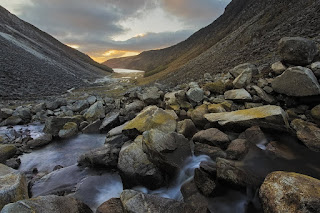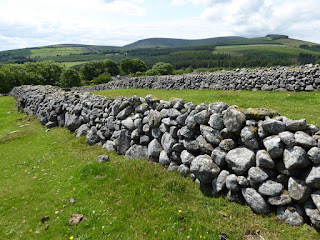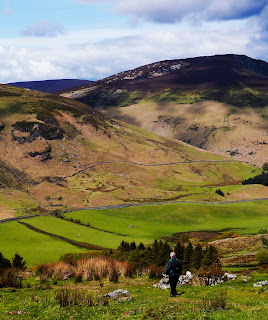A Letter from the Chair
 |
| Sean Byrne, Chairman, Wicklow Uplands Council |
Wicklow Uplands Council is now
20 years in existence so perhaps this is a good time to reflect on where we have
come from, how and why we came into existence, to remind ourselves of our
original mission and consider if we still live up to this responsibility.
From very humble beginnings in
1995 and from a small and dedicated group of people, the emergence of the
Uplands Council was conceived. The following is a snap-shot of the circumstances
which resulted in the formation of the organisation.
In the early 1990’s
communities suffered similar difficulties to those experienced all over the
country today, compounded by a lack of communication from various state-supported
institutions during a time when consultation with local people was not considered
necessary.
At that time in Wicklow, it
was a fledgling National Park Authority imposing conditions and structures in one
of the most scenic landscapes in Ireland. This and the prospect of management changes to
our mountain areas as a Category II National Park with absolutely no
interaction or communication with the people and communities affected by such
ambitious plans.
Rightly or wrongly, this was
seen as a major threat to traditional farm practices, recreational activities
and future planning, an infringement of existing rights and a way of life
enjoyed for generations. The uncertainty of how new regulation and legislation
would affect people who lived, worked and took their recreation in the same mountain
areas caused serious concern and anxiety to communities and individuals alike.
At the time there were various
groups and organisations representing different interests which were sometimes
completely at odds with each other, all individually trying to communicate with
Government agencies to present a case for their members. Representations were not co-ordinated and
varying interests often conflicted with one another which further served to
deepen what was becoming a divisive situation.
What was needed was an umbrella body or mechanism to bring all the
stakeholder interests together. This was a big ask, considering the diversity
of the groups involved which included:
The Irish Farmers Association,
Cheviot Sheep Owners Association, commercial dairy farmers, Farmers and Property
Owners’ Association, National
Association of Regional Game Clubs, local gun and sporting clubs, An Taisce,
Wicklow Environmental Group, Mountaineering Council of Ireland, large private
estates, commercial shooting estates, angling clubs, outdoor adventure centres,
motor sport interests, walking clubs, mountain bike enthusiasts, community groups,
medium and small sized businesses and tourism services and suppliers.
I must acknowledge the efforts
of a number of key people whose initiative and determination helped to resolve
some of the difficulties and frustration suffered by so many. It was the foresight of the late Professor
Adrian Phillips who initiated a study visit of interested parties in Wicklow to
Newcastle, Co Down to study the structure of the Mourne Heritage Trust which
was set up in 1980 to address similar issues in the Mourne Area of Outstanding
Natural Beauty. This led to the setting
up of a Steering Group led through several months of very difficult discussions
by former Chairman Dermot Hand. Others involved in those original discussions
that I must pay tribute to are Jim Healy, Director of the Leader II Programme,
who provided all secretarial and office assistance, David Rowe, Murtagh
O’Keefe, Saive Coffey, Johnny Power, Frank Nuttall and David Hermon. Those and others, who have remained involved
over the years, successfully established the Wicklow Uplands Council.
I thank all involved then and
over this past 20 years for working to establish and maintain
the role of Wicklow Uplands Council in effectively representing the issues of
our members and progressing so many successful projects with small resources. I thank our funders, The Heritage Council, and
in particular CEO Michael Starrett, who has supported us from the very start,
in addition to Wicklow County Council and businessman Denis O’Brien. I also wish to thank our member organisations
and individual members, our Board of Directors past and present, former Chairmen,
Dermot Hand, Declan O’Neill and Phillip Geoghegan, former CEO Colin Murphy who
was an institution in himself steering us through those early and difficult days
and our present staff, Cara Heraty, Margaret Murphy and Lenka Mulligan.
I am privileged to look
forward to my role as Chair of the Wicklow Uplands Council which is a unique organisation
in the Republic of Ireland.
Author: Sean Byrne, Chairman, Wicklow Uplands
Council


























